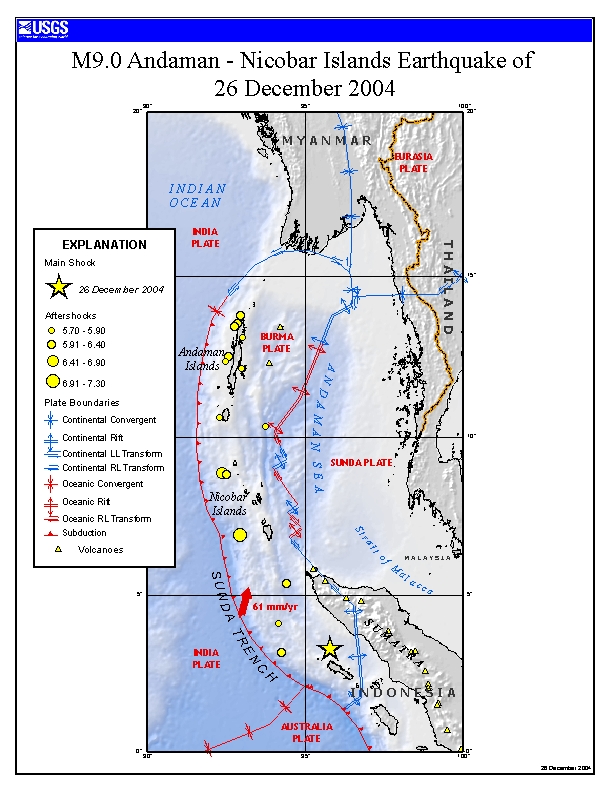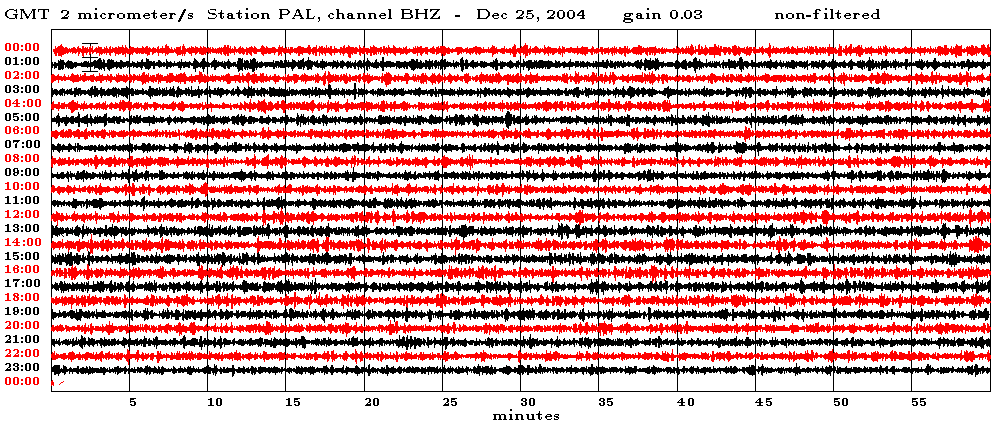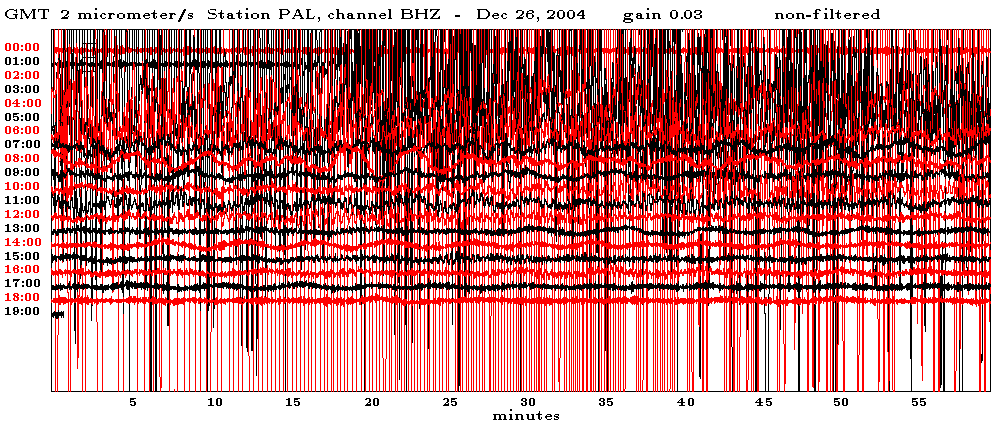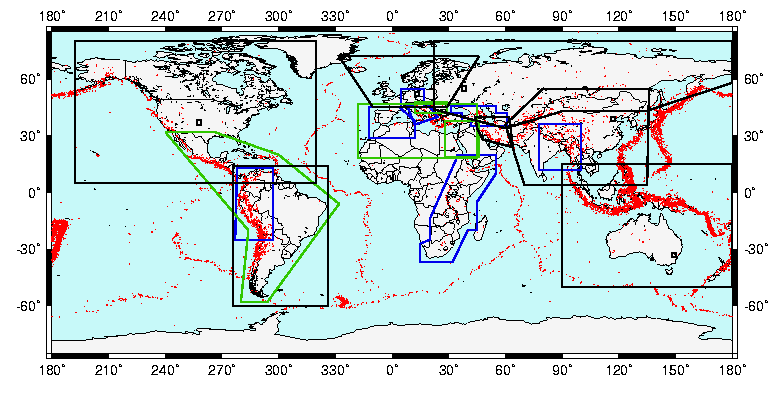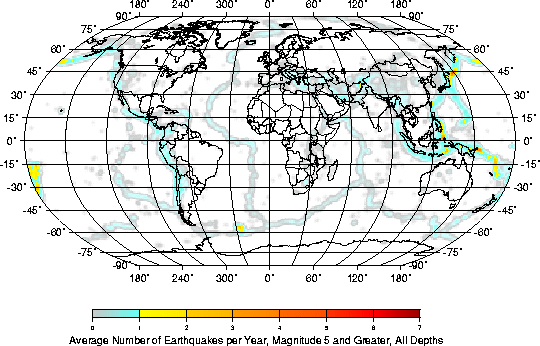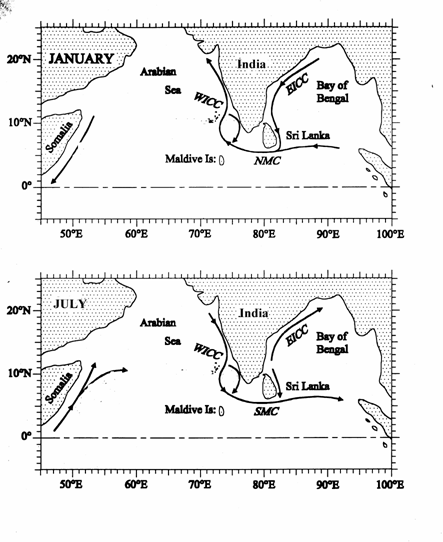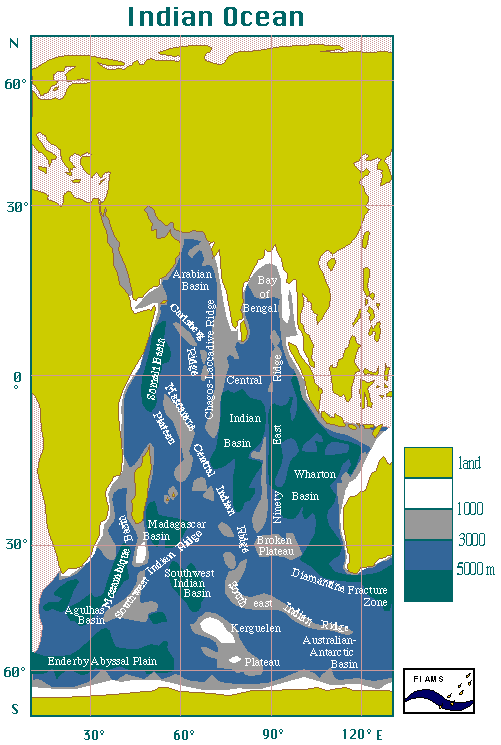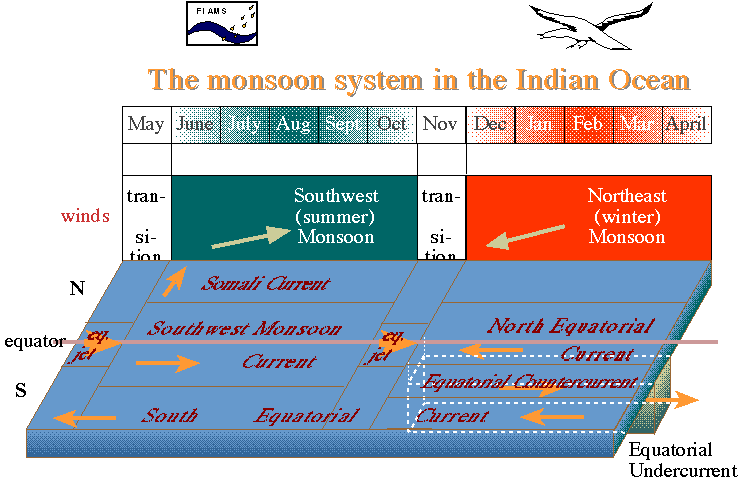http://earthquake.usgs.gov/eqinthenews/2004/usslav/
26th of December, 2004
Today's shallow, thrust-type earthquake occurred off the west coast of northern Sumatra at the interface between the India and Burma plates. In this region, the Burma plate is characterized by significant strain partitioning due to oblique convergence of the India and Australia plates to the west and the Sunda and Eurasian plates to the east. Off the west coast of northern Sumatra, the India plate is moving in a northeastward direction at about 5 cm per year relative to the Burma plate. Preliminary locations of larger aftershocks following today's earthquake show that approximately 1000 km of the plate boundary slipped as a result of the earthquake. Aftershocks are distributed along much of the shallow plate boundary between northern Sumatra (approximately 3 degrees north) to near Andaman Island (at about 14 degrees north).
27th December, 2004
The devastating megathrust earthquake of December 26th, 2004 occurred on the interface of the India and Burma plates and was cause by the release of stresses that develop as the India plate subducts beneath the overriding Burma plate. The India plate begins its decent into the mantle at the Sunda trench which lies to the west of the earthquake's epicenter. The trench is the surface expression of the India-Burma plate interface.
The tectonics of the region is complex and involves the interaction of the Australian, Sunda and Eurasian plates in addition to the India and Burma plate. The India and Australia plates move northeastwards at a rate of about 6 cm/year relative to the Burma plate. This results in oblique convergence at the Sunda trench. Some of this oblique motion is accommodated on the right-lateral transform faults and rifts that separate the Burma and Sunda plates.
Preliminary locations of larger aftershocks following the megathrust earthquake show that approximately 1000 km of the plate boundary slipped as a result of the earthquake. Aftershocks are distributed along much of the shallow plate interface and primarily extend northwards of the epicenter to the Andaman Islands.
The worlds largest recorded earthquakes were all megathrust events and occur where one tectonic plate subducts beneath another. These include: the magnitude 9.5 1960 Chile earthquake, the magnitude 9.2 1964 Prince William Sound, Alaska earthquake, the magnitude 9.1 1957 Andreanof, Alaska earthquake, and the magnitude 9.0 1952 Kamchatka earthquake. As with the recent event, megathrust earthquakes often generate large tsunamis that can cause damage over a much wider area than is directly effected by ground shaking near the earthquake's rupture.
